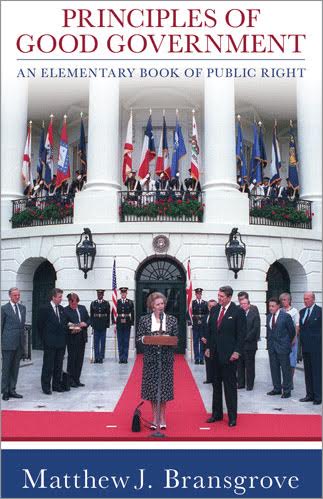The ability to ballot people electronically from the comfort of their home, business, or bathtub opens up the possibility of seeking the electorate’s instructions on more than simple ‘‘Yes’’ or ‘‘No’’ propositions. It introduces the possibility of letting the electorate decide quantities, such as the quantum of tax, spending, and immigrants. This would work by each voter being asked to nominate a percentage or number, with the electorate’s decision being the average of all the answers. Extreme votes (outside the bell curve) would be adjusted so as not to disproportionately impact the result. In this way, crucial decisions could be turned over to the people, rather than be determined, as they currently are, by corrupt cabals in the back rooms of party offices.
This article is an extract from the book ‘Principles of Good Government’ by Matthew Bransgrove

